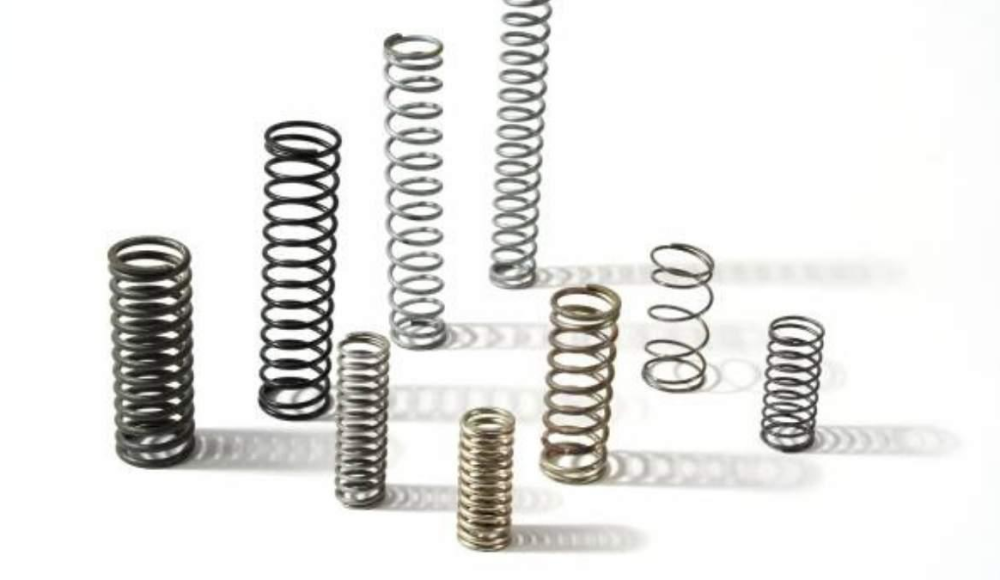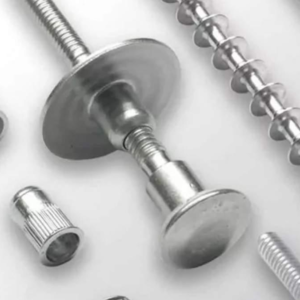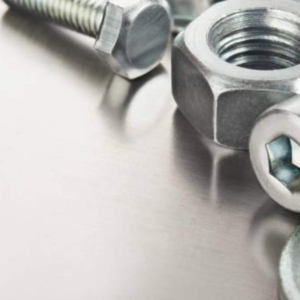Les ressorts sont des pièces mécaniques identiques pour différents composants. Ils sont fortement employés dans les montres, automobiles, et les smartphones. Il existe de nombreux types de ressorts, et tous varient dans leurs propriétés, ce qui rend difficile de choisir le bon. Dans cet article, nous discuterons des types de ressorts courants, leurs utilisations, le matériel qu'ils ont fabriqué, et rupture mécanique du ressort.
Le principe du ressort expliqué par la loi de Hook
Les ressorts sont des pièces mécaniques, bien capable de stocker de l'énergie. Ils stockent l'énergie lors du chargement et la libèrent lorsque la charge est retirée. Il s’agit d’un acte fondamental de toutes les variétés printanières et il est caractérisé par la loi de Hooke..
Selon la loi de Hooke.
La force nécessaire pour comprimer ou étendre le ressort varie en relation directe avec le déplacement. Mathématiquement, il est représenté comme:
F=−kX
Dans cette équation:
- F = Force appliquée
- X = Déplacement du ressort/force de rappel, négatif au déplacement.
- k = Constante du ressort; cela dépend de la nature du printemps, et informe d'une variable qui mesure l'élasticité du ressort.
Types de ressorts mécaniques
Les ressorts sont utilisés dans de nombreuses industries et domaines. Ils sont fabriqués à partir de nombreux matériaux et beaucoup ont des formes, différent des objets normalement créés. Les ressorts sont principalement caractérisés en trois types principaux;
Catégorie 01: Ressorts hélicoïdaux
Les ressorts hélicoïdaux sont fabriqués en enroulant le fil de manière hélicoïdale afin que les sections transversales puissent varier. Les principaux types de ressorts hélicoïdaux comprennent:
- Ressorts de compression: Les ressorts hélicoïdaux ouverts sont utilisés en compression sans charges axiales. Cela signifie que le diamètre de conception de la bobine ne change pas avec la charge. Ces ressorts sont utilisés dans les stylos à bille où l'action « clic » est logée et dans les environnements automobiles où les chocs sont absorbés..
- Ressorts d'extension: Les ressorts d'extension sont des bobines fermées qui emmagasinent la tension lorsqu'elles sont étendues et reprennent leur forme originale lorsqu'elles sont relâchées.. Ils sont couramment utilisés dans les arrangements à tirer, notamment les portes de garage et les barges de poids, où ils fonctionnent en s'étirant pour mesurer le poids..
- Ressorts de torsion: Les ressorts de torsion relient deux composants à des angles spécifiques. Ils fonctionnent généralement en tournant. Ils sont utilisés lorsqu'ils sont tordus et lorsqu'ils sont relâchés, ils retrouvent leur état naturel grâce auquel ils libèrent de l'énergie.. L'usinage CNC est une approche idéale pour façonner des ressorts de torsion personnalisés pour une utilisation en vrac.
- Ressorts hélicoïdaux: Les ressorts hélicoïdaux sont construits à partir de bandes métalliques rectangulaires. Ils sont capables de stocker de l’énergie puis de la restituer uniformément. Ces ressorts sont largement utilisés dans les montres mécaniques, jouets, et des mouvements tels que les sièges inclinables qui offrent un type de mouvement spécifique.
Catégorie 02: Ressorts à lames
Un ressort à lames présente une section rectangulaire. Ces ressorts sont composés de plaques métalliques appelées feuilles, superposé les uns aux autres. Ces ressorts sont normalement utilisés dans les grandes automobiles. Certains types courants sont mentionnés ci-dessous:
- Printemps à feuilles elliptiques: Ils se composent de deux ressorts semi-elliptiques en opposition progressive pour former une forme elliptique. Initialement, Ils ont été utilisés dans les voitures pour remplacer les chaînes mais ont été remplacés dans la plupart des voitures modernes.
- Printemps à feuilles semi-elliptiques: Ceux-ci sont généralement utilisés dans les voitures. Les feuilles d'acier de différentes tailles sont fixées à une extrémité du cadre du véhicule, avec le plus grand étant appelé la Master Leaf. Ces ressorts sont très efficaces pour fournir un atterrissage en douceur pendant les opérations hors route. En outre, Ils sont réputés pour leur simplicité de maintenance et de durabilité haut de gamme.
- Quarter Ellipse Elliptical Leaf Spring: Les ressorts de type quart d'elliptique ou de type cantilever ont une extrémité ancrée au châssis du véhicule et l'autre extrémité à l'essieu avant.. Cette conception fait que les feuilles s'ouvrent sous les charges de choc et les feuillets agissent comme des leviers pour dissiper le choc..
- Ressort à lames elliptique trois quarts: Ce type de ressort combine à la fois des caractéristiques quart-elliptiques et semi-elliptiques.. La partie semi-elliptique est fixée à la structure du véhicule et le quart de la section elliptique est fixé au train avant pour une meilleure stabilité.
- Ressort à lames transversales: Les ressorts latéraux sont positionnés sur les côtés. Alors que les ressorts longitudinaux s'étendent sur toute la longueur du véhicule. La feuille la plus longue se trouve en bas, et deux manilles sont ajoutées à la conception. Aussi efficace que puisse être cette configuration, cela entraîne un roulement indésirable dans certaines applications automobiles.
Catégorie 03: Ressorts de disque
Les ressorts à disque sont également appelés ressorts à rondelle. Ils peuvent être utilisés individuellement ou dans des configurations en série ou en parallèle. Il est possible de soulever de gros poids avec ces systèmes dans des zones limitées. Vous trouverez ci-dessous les principaux types de ressorts à disque:
- Ressort à disque Belleville: Ressorts à disques coniques, également connues sous le nom de sources de Belleville, offrir une action à ressort lorsqu'une charge est appliquée. Leur conception les rend optimaux pour supporter des charges importantes. Ils sont relativement petits en taille.
- Ressort à disque incurvé: Parfois appelées rondelles en forme de croissant. Les ressorts à disque incurvé ont une faible pression qui ne provoquera pas le desserrage de la fixation en raison des vibrations.. Ils dispersent efficacement les charges dans les boulons, des vis, et des noix, en particulier dans les équipements vibrants.
- Ressort à disque fendu: Cela implique des fentes autour de l'intérieur, et bords extérieurs. Il est possible d’obtenir une faible capacité de charge avec une déviation élevée des engrenages, transmission automatique, et embrayages en exploitant ces ressorts.
Fonctions des ressorts
Les ressorts ont une application significative dans différents produits industriels. Voici les fonctions suivantes des ressorts ainsi que les utilisations:
Propriétés d'absorption des chocs
Les ressorts sont capables de recevoir, de se dilater ou de se contracter par l'application d'une force. Cette capacité leur permet de bien gérer les risques. Par exemple, dans les automobiles, les ressorts réduisent la force d'impact à chaque fois qu'une voiture heurte une bosse, puis libèrent lentement l'énergie stockée.
Stockage et production d'énergie
Les ressorts jouent également un rôle essentiel dans le stockage mécanique de l’énergie. Ils peuvent stocker et décharger de l'énergie de manière constante et sont donc utiles pour remplacer les piles de certains appareils.. L'application prévue est bien illustrée par les montres mécaniques et les boulons d'armes à feu..
Contrôle des mouvements
Les ressorts peuvent contrôler le transport de pièces distinctes. Ces applications se retrouvent dans de nombreuses industries telles que les garages, portes, machines de pesée, soupapes de moteur à combustion interne, et systèmes de commande d'embrayage.
Amortissement des vibrations
Les ressorts sont des outils précieux pour réduire les vibrations. Donc, ils contribuent à améliorer la stabilité des produits dans les zones de résonance. Ils sont fonctionnels, par exemple dans les suspensions automobiles et les wagons de train où les ondulations doivent être bien gérées..
Types de matériaux utilisés dans la fabrication des ressorts
| Matériel | Caractéristiques uniques |
| Acier faiblement allié | Résistance aux hautes températures; solide et durable. |
| Fil étiré à froid | Résistance à la traction accrue; meilleure tolérance à la chaleur. |
| Fil trempé à l'huile | Résistant à la fatigue; résiste à la chaleur et à la déformation. |
| Bande durcie en bainite | Très fort; excellente résistance à la fatigue. |
| Acier inoxydable | Résistant à la corrosion; limite d'élasticité élevée. |
| Alliages de cuivre et de titane | Durable; bonne résistance à la corrosion. |
Techniques générales de production de ressorts
Les ressorts peuvent être produits selon diverses méthodes, y compris le bobinage, traitement thermique, affûtage, enrobage, et finition. En plus, ils peuvent varier selon les types de ressorts, mais le concept global reste clair.
1. Enroulement
Dans cette première étape, les opérateurs introduisent du fil à ressort dans une machine CNC. Suivant, le fil est torsadé dans la formation souhaitée, en fonction de la spécification requise du fil. Plusieurs méthodes sont utilisées lors de cette étape:
- Enroulement: L'enroulement utilise des enrouleurs à ressort ou des machines à commande numérique par ordinateur pour obtenir des bobines réglées.. Le procédé est couramment utilisé en compression, extension, et ressorts de torsion.
- Formant: Pendant le processus de formage, Les formeurs de ressorts CNC sont utilisés pour créer diverses conceptions avec plusieurs courbures et rayons. Généralement, Il s'applique aux conceptions de ressorts d'extension et de torsion.
- Pliant: Le pliage utilise des cintreuses de fil contrôlées par ordinateur pour mettre le fil sous différentes formes. Ce procédé est souvent appliqué dans la fabrication de formes en fil.
2. Traitement thermique
Le traitement thermique permet aux ressorts de prendre, sous contrainte, une forme différente de celle prévue. Chacun d'eux est basé sur la quantité de matériaux, type à stériliser, température, et la durée requise pour ce matériel.
3. Affûtage
Meuler les extrémités des ressorts à plat est essentiel. Cela permet au ressort de tenir debout lorsqu'il est placé verticalement ou dans d'autres positions.. Cela contribue également à faciliter sa fonction.
4. Revêtement et finition
Le revêtement et la finition sont essentiels pour améliorer la valeur esthétique des ressorts. Par exemple, la galvanoplastie avec du cuivre offre une excellente conductivité. Entre-temps, le revêtement en poudre améliore l'attrait visuel de l'article. D'autres traitements de surface peuvent inclure le grenaillage appliqué au ressort travaillé à froid., placage, revêtement en poudre, et anodisation.
Raisons des défaillances des ressorts et leurs mesures correctives
Ces pannes peuvent survenir au printemps et entraîner des dommages aux équipements, coûts d'entretien élevés, et une fiabilité réduite du produit. Un bilan de ces pannes est important à noter à des fins de prévention: Vous trouverez ci-dessous les causes courantes et leurs solutions correspondantes:
1. Sélection de matériaux incorrecte
Le choix des matériaux influence fortement les propriétés des ressorts. Lors de la sélection des matériaux, il est possible de compromettre les caractéristiques pour des avantages considérés. Ne pas le faire peut entraîner des problèmes. Donc, il est conseillé de rechercher différents matériaux avant de faire un choix.
2. Mauvaise qualité de finition
Les processus de revêtement et d'anodisation tels que le revêtement en poudre augmentent les performances des ressorts. Le manque d'application appropriée et l'exclusion complète de ces processus exposent les ressorts à la corrosion dans des environnements hostiles.. Donc, Une bonne finition est essentielle pour maintenir l’intégrité des ressorts.
3. Température de fonctionnement non définie
Les ressorts doivent être adaptés aux températures auxquelles ils seront utilisés. Choisir des matériaux qui ne se déforment pas à haute température est important. Utiliser un traitement thermique approprié est une autre méthode d’amélioration. En plus, l'application de finitions à haute stabilité thermique peut améliorer les performances.
4. Mauvais processus de fabrication
Les contrôles de qualité pendant la production sont cruciaux. Ils garantissent que les ressorts fonctionnent et apparaissent comme prévu.
Conclusion
Les ressorts sont indispensables dans les produits qui contiennent du mouvement. Les ressorts sont comprimés pour stocker l'énergie puis relâchés lors de l'expansion. Pour choisir le bon type de ressort, la connaissance des différents types et de leurs caractéristiques est obligatoire. La fonctionnalité de chaque ressort dépend du type de matériau utilisé, la construction du printemps, et le mécanisme d'assemblage. Experts-conseils au printemps, le design vous aidera à prendre les bonnes décisions pour votre projet!



